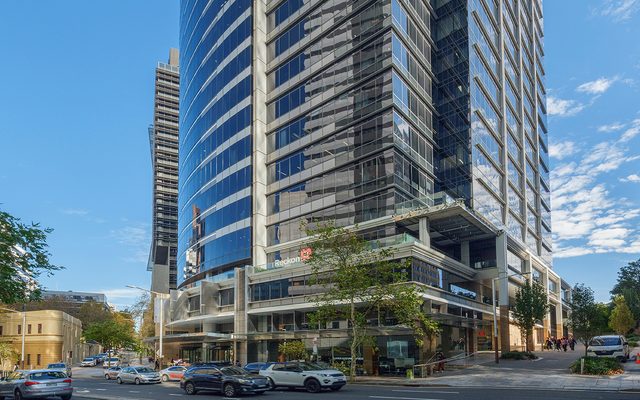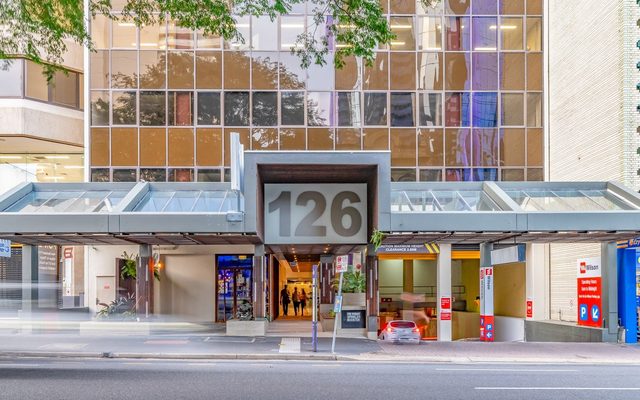This article is from the Australian Property Journal archive
FRESH from the $240 billion merger with IFM Investors, ISPT is moving to capitalise on the retail investment rebound by putting a Melbourne CBD centre on the market, not far from the recently sold David Jones building.
As part of the overhaul of the $17 billion ISPT Core Fund following the merger, the fund is offloading 206 Bourke Street in the CBD in one of the first key commercial property offerings for 2025.
JLL’s Stuart Taylor, Josh Rutman, and MingXuan Li, in conjunction with Cushman & Wakefield’s Oliver Hay, Daniel Wolman, and Leon Ma have been appointed to sell the asset.
Taylor said the property was an incredible dynamic for a retail offering.
“Retail investment is certainly going through a rebound, and people are also coming back to the CBD and numbers are above pre-covid.
“This asset offers an attractive building and land rate, the returns and value metrics of this asset will attract a range of investors,”
Taylor added that that asset also provides a highly strategic 3,157 sqm landholding, benefiting from enormous frontage to Bourke Street and one of the largest frontages to Melbourne’s bustling Chinatown at the rear.
Hay highlighted the development potential of the asset, pointing out that the complex was previously permit approved for the development of a rooftop bar and entertainment facility, whilst separately having been permitted for a nine-level development incorporating hotel above the existing retail centre.
“The asset provides an extraordinary opportunity to secure a strategic CBD asset, underpinned by strong tenancy profile and income security, whilst offering a range of repositioning and major development opportunities,” said Hay.
“Major CBD retail assets have been extremely tightly held, with very few opportunities presented to market that provide such attractive investment fundamentals and genuine value-add optionality. We expect the campaign to generate significant interest from a domestic and international buyer pool and a range of capital sources,” said Taylor.
“We see it as the perfect time to buy well located retail assets. As rents continue to rise off the back of a post pandemic environment and pricing has reset to levels not seen in over a decade,” Hay added.
Meanwhile this listing closely follows the recent sale of the flagship David Jones Store at 310 Bourke Street by South Africa’s Woolworths Holdings’ to Chris Lock’s IP Generation for $223.5 million on a yield of more than 7%.
In light of the rebound in activity, this proposed sale of 206 Bourke Street will be a test of the market for the ISPT and play a part in its future decision on whether to retain or divest the remaining Melbourne CBD retail assets including the Strand, Melbourne’s GPO and the Midtown Centre.
The agents declined to comment on the pricing.
But market sources told Australian Property Journal that the asset could fetch around $80 million.
Formerly known as the Village Centre, the complex is one of the most traded CBD commercial properties over the past 20 years.
ISPT acquired 206 Bourke Street in 2015 from Singapore’s Hiap Hoe for $118.3 million excluding GST on a yield of about 6.5%.
Prior to that, Hiap Hoe paid $105 million to buy the centre in September 2013 from Les Smith’s LAS Investments.
But throughout the property’s transactional history, Smith was the only one who pocketed the biggest windfall, having snapped up the centre for only $32.75 million in 2007.
Cromwell sold the asset to Smith, having purchased it three years earlier from Challenger for $31.9 million.
The six-storey centre comprises 11,845 sqm centre and is home to famous Hong Kong restaurant Tim Ho Wan, as well as JB Hi-Fi, Holmesglen Institute & Victoria Police, providing a fully leased net income of circa $6 million.
It sits along one of Australia’s most highly pedestrianised retail precincts with a Main Trade Area population of 3.26 million and projected to grow to 4.6 million (+41%) by 2046.
This centre is set to benefit from forecast total trade area retail expenditure growth from $71.6 billion in 2024, more than doubling to $162.7 billion by 2046, fuelled by Melbourne’s population and tourism growth.




